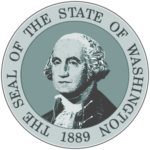Pillar overview
This pillar focuses on how learning and identity development occur in cultural contexts using a critical multicultural lens. It also supports students to explore their own cultural identity and consider the ways that their language, culture, and experiences can serve as assets in teaching. It offers students the language to identify potential biases and the tools to push back against them. Students write two personal narratives; the first focuses on the student’s cultural identity and the second on the student’s parent or family member’s educational history. Each of these narratives allows the student to expand their understanding of culture, educational equity, personal strengths, and aspirations deeper over time. Each essay asks them to integrate the unit’s concepts and skills in writing personal narratives that link examples from their own or their family’s lives to aspects of their own learning, identity or development as a teacher. The lessons gained throughout this unit and in writing these two essays lays a foundation for the college and scholarship applications that students will write as a part of their college access portfolio.
Competencies
Students will…
- Apply theories of culture, learning and development to better understand their own identity and that of peers, professionals, family members and future students.
- Represent their cultural identity and family history in two personal narratives that explore their views of education and highlight funds of knowledge and sociocultural context.
- Understand issues of bias and discrimination, and practice critical reflection to surface and address biases or assumptions that interfere with learning or teaching.
- Intentionally build relationships with professionals, peers, families and their students to support all students’ learning, agency and development of positive identity.
Essential questions
- What is culture and how does it influence identity and learning?
- What is my cultural identity and why does that matter for my education or career?
- Why is it important for all teachers to understand their cultural identities?
- How can teachers learn about culture from students?
- How can teachers/ schools build positive and collaborative relationships with parents/ families to support student success?
Desired results
Students will be able to…
- Understand their cultural identities, naming their funds of knowledge and identifying potential biases they may possess.
- Apply concepts of culture to better understand their peers, parents and future students.
- Identify inadvertent biases and actively work against bias and discrimination.
- Apply their understanding of culture, family, and community to think about building positive relationships and partnerships with parents/families for student success.
- Understand how to create supportive relationships with students that empower and affirm cultural identity.
Students will understand that…
- Culture means many things to different people.
- Identity and learning occur within a cultural context.
- Individuals are active meaning-makers, actively constructing their identity and learning.
- We all have a unique culture.
- We are all members of multiple cultural groups and within groups, there is both commonality and difference.
- How we see ourselves and how others see us interact to shape who we are.
- No person is just one thing, different aspects of our identities come together to form who we are.
Students will know…
- Key vocabulary, concepts, and theories related to understanding culture and identity.
Students will be skilled at…
- Listening to and learning from others.
- Identifying bias in the media.
- Reading graphic representations of culture as tools to develop an understanding of key concepts.
- Reflecting on their own life experiences as a window to culture.

